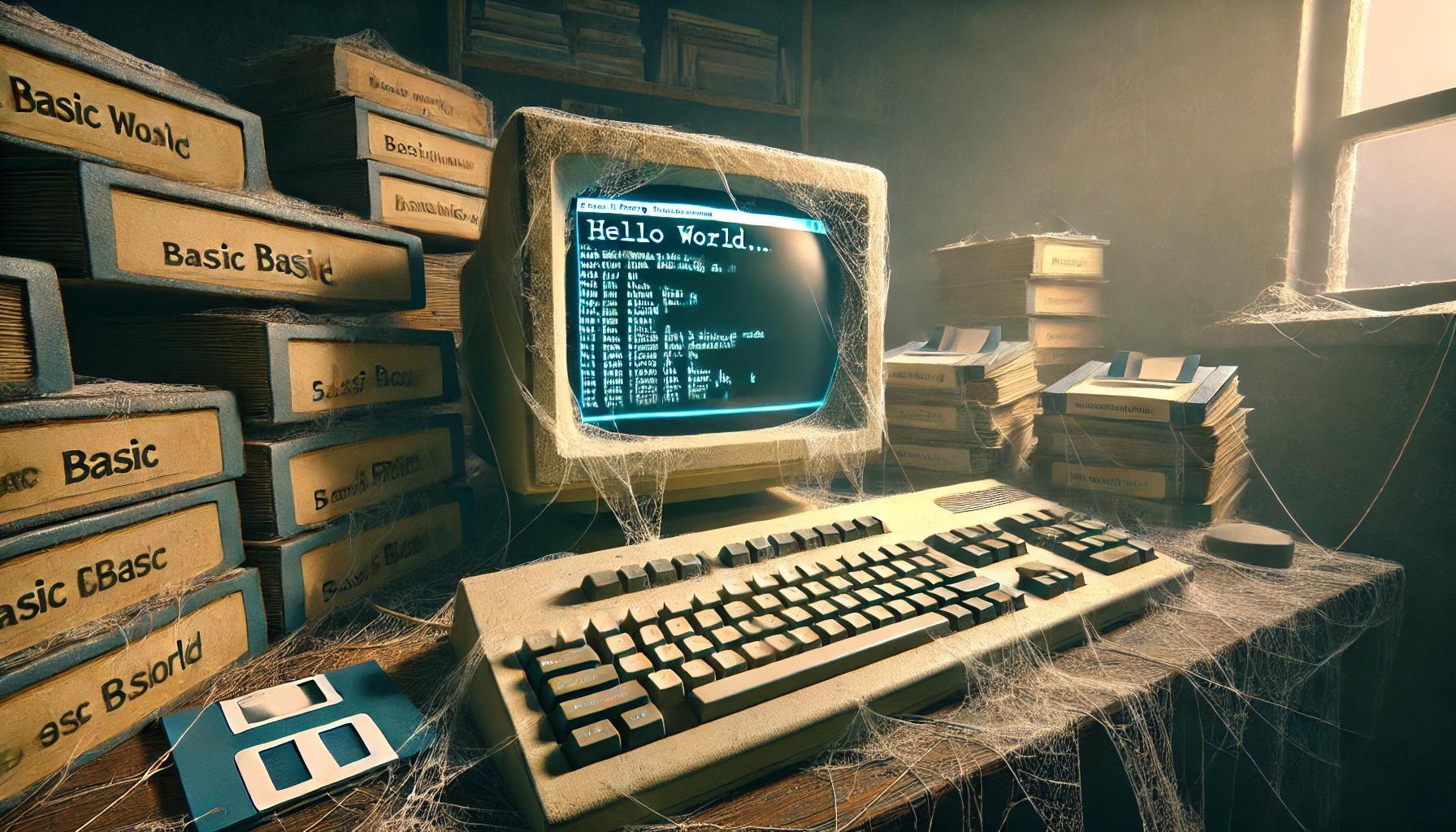Lost in Code: The Demise of 10 Dead Programming Languages - Part 7: BASIC

BASIC, which stands for Beginner's All-purpose Symbolic Instruction Code, was created in the mid-1960s by John G. Kemeny and Thomas E. Kurtz at Dartmouth College. The fundamental goal of BASIC was to make programming accessible to students and non-scientists by offering an easy-to-learn language that could be extensively used in education. Unlike the more complicated languages of the period, such as FORTRAN or COBOL, BASIC had a simple syntax that appealed to those with little or no programming experience. BASIC's user-friendly architecture quickly gained popularity in academic contexts, and it became an essential component of computer science teaching.
The popularity of BASIC grew in the late 1970s and 1980s, coinciding with the rise of personal computers. It was the preferred programming language for early microcomputers such as the Apple II, Commodore 64, and IBM PC, which frequently included a BASIC version pre-installed. BASIC's interactive aspect enabled users to enter commands directly into a prompt, receive quick feedback, and experiment with developing their own simple programs. This hands-on approach helped many people understand programming and played an important part in developing the first generation of home programmers.
However, as programming needs expanded, BASIC's limits became apparent. Its early versions lacked organized programming capabilities such as loops and functions, making it difficult to manage big, sophisticated applications. While succeeding versions included enhancements and more advanced features, the language nevertheless lagged behind newer languages that were emerging. Languages such as Pascal, C, and subsequently Python provided more robust features, such as object-oriented programming, improved error handling, and greater support for modern software development processes. These developments emphasized BASIC's inadequacies, resulting in its slow decline in general use.
The professional programming community's transition to languages with superior performance and scalability exacerbated BASIC's downfall. As software development became more complex, BASIC was seen as too basic for significant applications. Developers and instructors began to prefer languages that could perform more complex jobs while adhering to modern programming standards. As a result, BASIC's importance dropped, and it became associated with hobbyist projects and instructional tools rather than professional software development.
Although BASIC is no longer a prominent force in the programming world, its legacy continues. Many programmers in the 1970s and 1980s learned to code using BASIC, which piqued their curiosity and led to careers in technology. Today, many people remember BASIC fondly, and it is still used to teach essential programming ideas. Its simplicity and historical relevance recall the early days of personal computing and the need to make technology available to all. Although BASIC is no longer at the forefront of programming innovation, its contribution to the evolution of computer science is unquestionable.
Creativity Meets Code.
Join our mailing list
© Copyright xklsv 2025. All Rights Reserved
xklsv